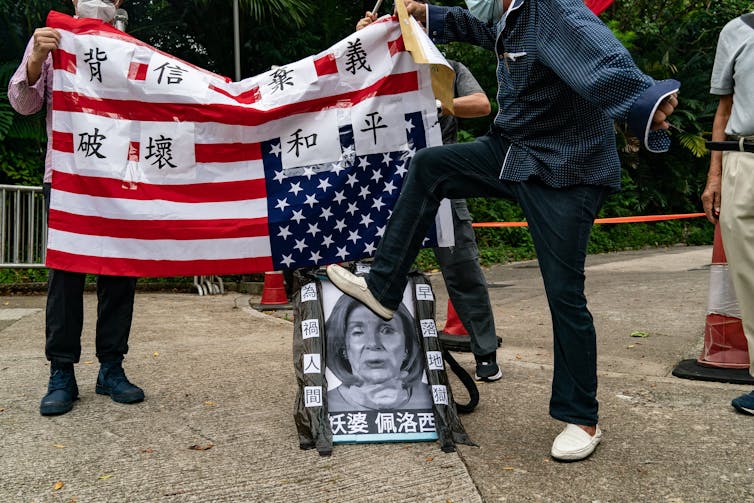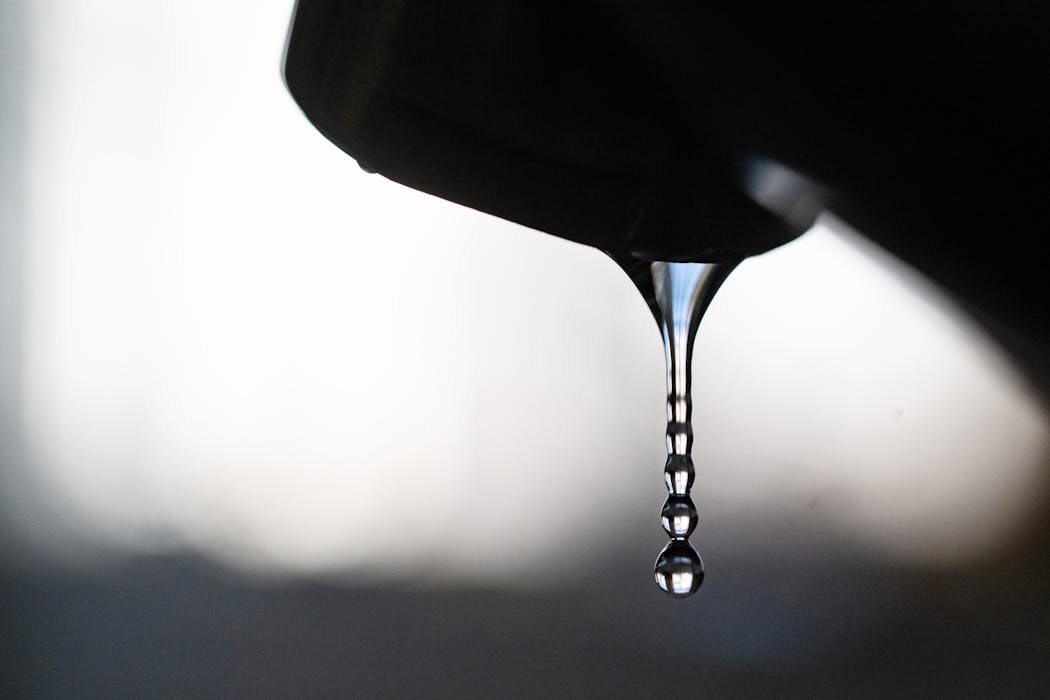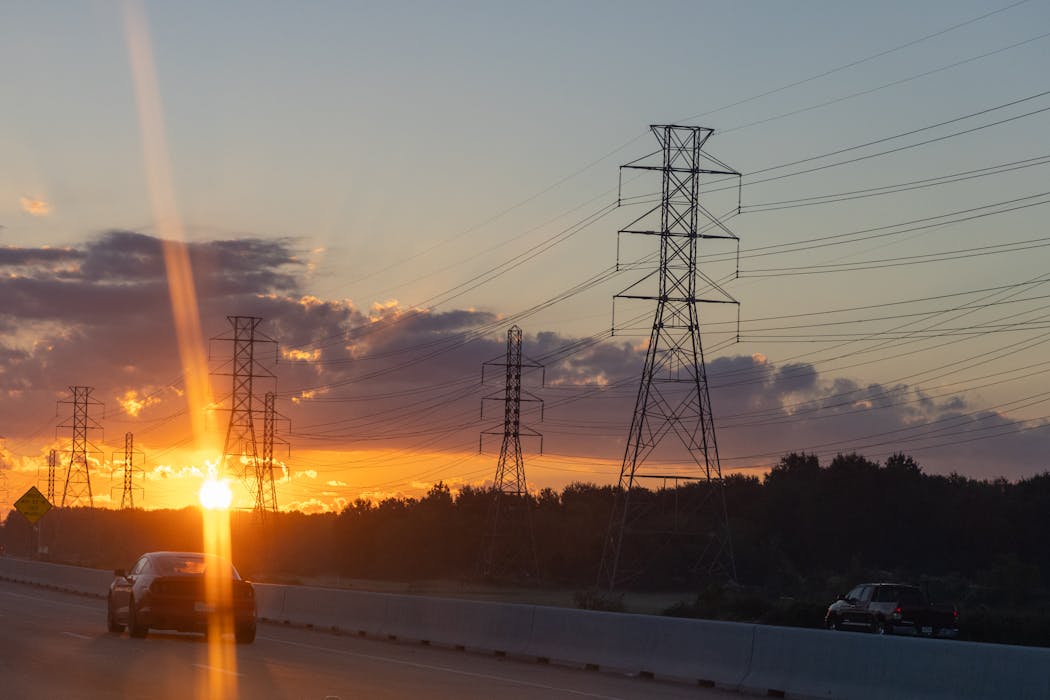Six years have passed since presidents Xi Jinping and Donald Trump last met, but the substance of discussions remains largely the same. Back in 2019, trade and Taiwan also rode high on the agenda. Ahead of the pair’s expected meeting on Oct. 30, 2025, Trump also indicated he wants to enlist China’s help in bringing Russia to the peace table – adding a third weighty issue for the two men to chat about. But how has the needle moved on these three issues – trade, Taiwan and China-Russia relations – since the last meeting between Trump and Xi? Rana Mitter, professor of U.S.-Asia relations at Harvard Kennedy School, explains what has changed since 2019 and the geopolitical background to the upcoming bilateral talks. Taiwan: US hawks in retreat Compared with where the two countries were in 2019, the biggest variable that has changed is whether the U.S. has softened its position on Taiwan. In the first Trump administration, Taiwan policy was shaped by figures such as Secretary of State Mike Pompeo who were decidedly hawkish on China and the issue of Taiwan. The U.S. was seemingly pushing then to bolster its assurance – falling short of commitment – to help Taiwan pursue a path of autonomy, but not outright independence. During the Biden administration, the U.S. position on Taiwan was shaped by other, wider China-U.S. events, such as the spy balloon and then the controversial visit to Taiwan by then-House Speaker Nancy Pelosi – both of which damaged Washington-Beijing relations and resulted in an uptick in tensions across the Taiwan Strait. A pro-China supporter steps on a defaced photo of U.S. House of Representatives Speaker Nancy Pelosi during a protest in Hong Kong against her visit to Taiwan on Aug. 3, 2022. Anthony Kwan/Getty Images Trump’s current secretary of state, Marco Rubio, has also traditionally been very hawkish on Taiwan – but there is a wider sense that this hawkish approach isn’t dominant in the second Trump administration. Much of this centers on Trump himself and questions over whether he is looking to find a different compromise agreement with China that includes the U.S. stance on Taiwan. Evidence of this could be seen earlier this year when the Trump administration prevented Taiwan President William Lai Ching-te from stopping off in New York on his way to Central and South America – something that could be interpreted as a concession to Beijing. Similarly, the Trump nixed US$400 million of U.S. weapons earmarked for Taiwan over the summer. The other main difference now, compared with when Xi and Trump last met, is that they are dealing with a politically different Taiwan. In 2019, the U.S. and China were dealing with Taiwanese President Tsai Ing-wen, who had a practical and flexible approach to the issue of Taiwanese independence – something that Beijing vehemently opposes. The new Taiwanese president, Lai Ching-te, hasn’t pushed for independence, but certainly a lot of analysts have said he is more enthusiastic in wanting to stress the separation of Taiwan from the mainland. That is a position that the U.S. doesn’t want to give any signal that it is supporting. Meanwhile, Beijing has continued to push hard on Taiwan – days before the Trump-Xi meeting, Chinese state media announced that “confrontation drills” involving Chinese H-6K bombers had taken place near Taiwan. But this is typical. The Chinese government has traditionally pushed a maximalist line on Taiwan before meetings and then scaled back rhetoric during negotiations. So what does Beijing want? In recent weeks and months, the Chinese Communist Party has indicated that it would like Washington’s phrasing on Taiwan to change from “the U.S. does not support independence” to “the U.S. opposes independence.” But I would not expect any move from Washington in the short term on this. The preferred settlement on Taiwan for the short to medium term is status quo. However, that gets harder and harder due to China’s increased presence in Taiwanese air and naval space. Trade: Trump tools are blunted In 2019, the U.S. and China were in the process of working out a “phase one” economic and trade agreement, which was supposed to develop into a much bigger deal. But the wider deal didn’t come about. Both sides were finding it hard to achieve the terms of the deal, and then the pandemic in 2020 threw global trade and supply chains out of kilter. We are now in a very different tariff environment than during the first Trump administration – tariffs are now universal, and Trump wants everyone to pay them. That creates in the short term a harder negotiating position for Trump – there is less incentive for U.S. allies to help pressure China with additional restrictions of their own. Take the U.K, for example. In the first Trump administration, a succession of phone calls from the White House pressured the Boris Johnson government to ban Chinese giant Huawei from having a slice of the U.K. telecommunications market. But at that point, there was no U.S.-imposed 10% tariff on the U.K. And while 10% is low compared with that imposed elsewhere, it is still an obstacle when trying to impose pressure on allies and partners against China. And compared with 2019, the vulnerability of supply chains has become even more apparent. We have seen evidence of that with China’s actions over restricting rare earth materials. But in the intervening years, Beijing has inserted itself even more so into global supply chains – making it harder for Trump to also pressure American companies. Take Apple. It has, under pressure from the Trump administration, moved more of its production of iPhones to India – a rival to China. But in practice, iPhone component production and assembly still take place in China – as no other place can do the job with such precision and volume. Russia: China continues balancing act China’s approach to its relationship with Russia hasn’t really changed since the first Trump term – Beijing still makes its decisions on Russia with little regard to what the U.S. thinks. Of course, Russia did not fully invade Ukraine until 2022 – three years after Xi and Trump last met. But by then there had been the invasion of Crimea in 2014 and Georgia in 2008. China didn’t condemn Russia for those actions, but it noticeably abstained in the U.N. on those issues. And it never acknowledged Russia’s annexation of those areas. Similarly today, Beijing has never acknowledged Russia’s claims over the parts of eastern Ukraine it occupies. So China has continued its balanced, cautious position. Its priority is not offending Russia, which it increasingly eyes as a key market for Chinese goods. It provides tech that has dual-use capability useful for Russia’s military sector, and oil – but drives a hard bargain. These are no “mate’s rates.” China wants nothing to disturb that trade, so it has been at first suspicious, then relieved by the relative warmth of the Trump administration toward Russia. As to the war itself, China evidently understands that Russia may not win the war, but it is able to maintain it – and that is just fine. An isolated Russia, dependent on Chinese goods, is to Beijing’s benefit. Rana Mitter does not work for, consult, own shares in or receive funding from any company or organization that would benefit from this article, and has disclosed no relevant affiliations beyond their academic appointment.






